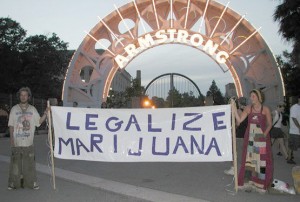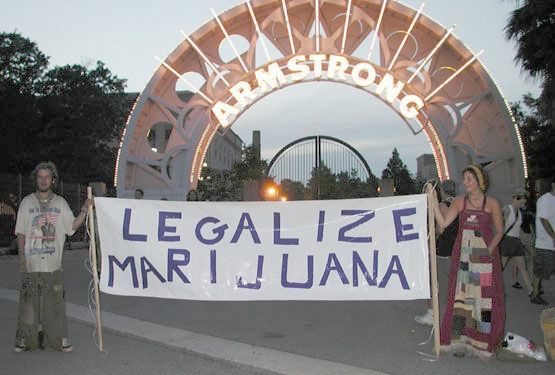 The Stephen Harper government is looking to pass a tough-on-crime bill that will include six months in jail for owning a grow-up with six or more marijuana plants. Abbotsford Police Chief, Bob Rich told the Abbotsford News, “I’m not suggesting this is perfect legislation, but […]the cash cow that has made gangs so prolific in the Fraser Valley is growing marijuana.”
The Stephen Harper government is looking to pass a tough-on-crime bill that will include six months in jail for owning a grow-up with six or more marijuana plants. Abbotsford Police Chief, Bob Rich told the Abbotsford News, “I’m not suggesting this is perfect legislation, but […]the cash cow that has made gangs so prolific in the Fraser Valley is growing marijuana.”
Perhaps the most responsible legislation would be legalization and provincial regulation of marijuana. Marijuana has long been easy revenue for organized crime in British Columbia, and since the city of Abbotsford has cracked down on crime many of the troublemakers have simply moved themselves north to Prince George. Just because the problem has moved does not mean that it is gone or should be disregarded.
According to Business Week magazine, the production cost of government-sponsored marijuana in Canada is approximately $0.33/ gram and the cost of retailing and distribution is an additional $0.10/gram. Meanwhile, most consumers in North America are paying approximately $10/ gram for illegal marijuana.
If Canada uses the same ratio of marijuana users as the US (between 1:12 to 1:5) then between 2.8 million and 6.8 million Canadians smoke marijuana at least once a day. At $5 a day (if one gram supplies two cigarettes) this will raise the federal government $4.9 billion to $11.8 billion yearly after growing, retailing, and distribution costs as per above.
According to the Department of Finance Canada online, in the fiscal year of 2009-2010, “Canada provided $12.3 billion to help families raise their children through the Canada Child Tax Benefit and the Universal Child Care Benefit.” The aforementioned revenue alone is almost enough to double the cheques sent to struggling parents. Or the revenue could more than triple the amount Canada sends as “assistance to low- and modest-income families through the Goods and Services Tax (GST) credit ($3.7 billion).”
Part of the legalization of marijuana includes the same age limitations as alcohol and tobacco, which in theory should make it unavailable to youth. I understand that there is a common concern surrounding the harmful effects of marijuana.
As released in CBC News, in 2007 Professor David Nutt of Britain’s Bristol University and his associates released a new framework to rate substances based on the risks they pose to society. In this list, topped by cocaine, heroine, barbiturates, and street methadone, alcohol was rated the fifth most harmful drug and tobacco was listed ninth. In this list of dangerous substances, cannabis was rated after alcohol and tobacco at number eleven.
Perhaps if we can trust consenting adults to use these dangerous (according to Professor Nutt) substances, we can trust that they will use their wisdom to use marijuana in strict moderation.
The legalization of marijuana would restrict its availability to youth; it would provide government set regulations on distribution and intake, and perhaps most importantly, provide more revenue to be used for the benefit of Canadian residents who cannot afford daycare for their children or healthy food for their family


